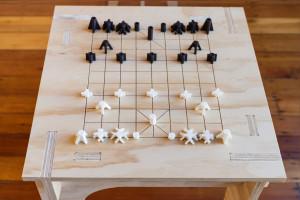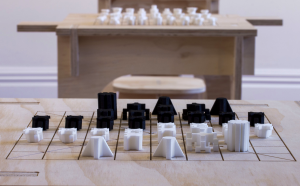 It shouldn’t be a surprise to anyone that the game that we know as chess is very old–however, it is much older than most people would imagine. Modern chess is actually a variant of the game that it was based on, a four-player game called Chaturanga that originated in India back in the year 400. After being adopted and modified by Persians, Muslims, the Portuguese and Greeks, Chess finally made its way into Europe and by the 1400s the game as we know it today had evolved. While modern chess is enjoyed all over the world today, many regional variants that evolved concurrently to it are still actively played. And while chess and all of these variants evolved from the same game, often their rules and game pieces vary wildly from one to the next.
It shouldn’t be a surprise to anyone that the game that we know as chess is very old–however, it is much older than most people would imagine. Modern chess is actually a variant of the game that it was based on, a four-player game called Chaturanga that originated in India back in the year 400. After being adopted and modified by Persians, Muslims, the Portuguese and Greeks, Chess finally made its way into Europe and by the 1400s the game as we know it today had evolved. While modern chess is enjoyed all over the world today, many regional variants that evolved concurrently to it are still actively played. And while chess and all of these variants evolved from the same game, often their rules and game pieces vary wildly from one to the next.
Los Angeles artist Nova Jiang wanted to explore all of these chess variations, many of them from Asian countries, and reimagine their game pieces to convey their rules of movement and capture. Her project is called Orthogonal/Diagonal and she ultimately designed eight different chess games, including traditional Western chess, Makruk from Thailand, Janggi from Korea, Shatar from Mongolia, Sittuyin from Myanmar, Shogi from Japan, Xiangqi from China, and Shatranj, a predecessor to modern chess from Persia. Each of the game boards that she made are slightly different, but many of the variants have the same or similar game pieces with similar rules. Each piece that she designed and 3D printed will essentially act as the rulebook of the game because their design demonstrates how important each specific piece is in the game, and where it can move on the board.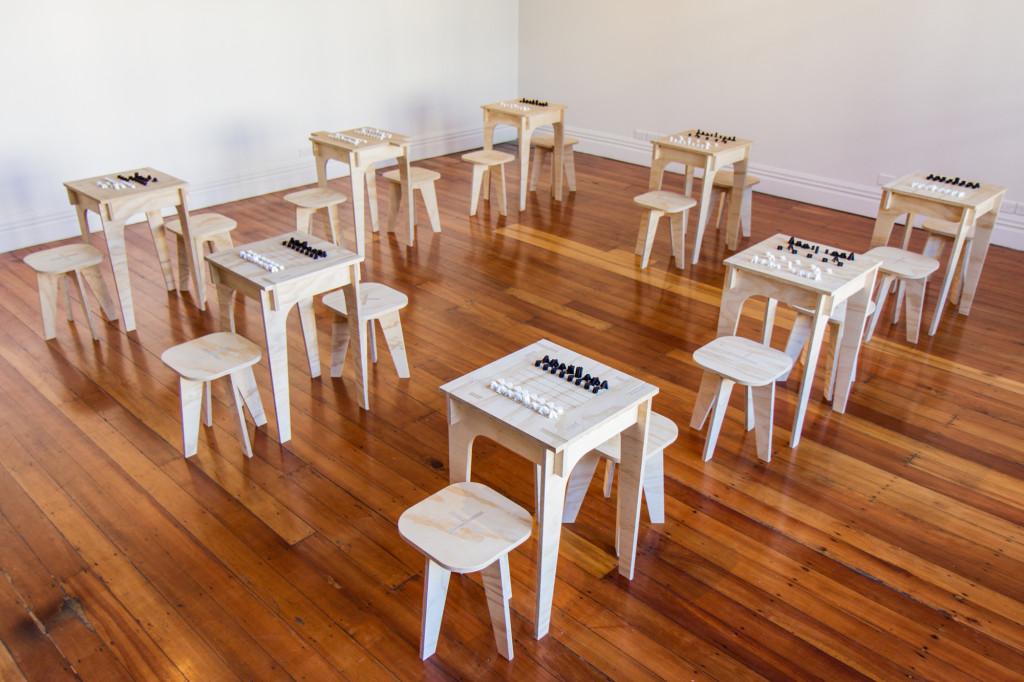
“I remember having a lot of trouble learning checkers because the forms of the pieces didn’t suggest their functions, so here, the instructions help you pick up the visual language. Once I stripped away the culturally specific design for each variant, it became easier to focus on the underlying system and see how each variant evolved. It’s difficult to play Chinese, Korean and Japanese Chess if you can’t read the characters used to mark the pieces. Part of Orthogonal/Diagonal is about overcoming language and geographical barriers. Once you learn the visual language, then theoretically a Japanese Shogi player can have a friendly game of Mongolian Shatar with someone who’s only familiar with Western Chess,” Jiang explained.
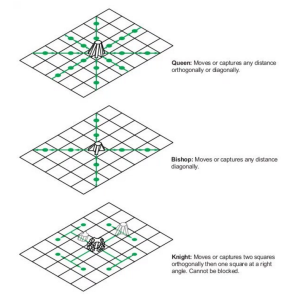 Each of the intricately designed game pieces that Jiang 3D printed spells out quite specifically how it works, so if the same piece is used on a different game board it will work the same way. For instance, the queen piece is extremely tall, designating how powerful she is, and the eight pointed star design of the piece illustrates all of the various directions that she can travel. The bishop is much smaller and has four points, indicating that it is more limited in the directions that it can travel, while the knight has four “t” shaped points, indicating that it is capable of more complex movements.
Each of the intricately designed game pieces that Jiang 3D printed spells out quite specifically how it works, so if the same piece is used on a different game board it will work the same way. For instance, the queen piece is extremely tall, designating how powerful she is, and the eight pointed star design of the piece illustrates all of the various directions that she can travel. The bishop is much smaller and has four points, indicating that it is more limited in the directions that it can travel, while the knight has four “t” shaped points, indicating that it is capable of more complex movements.
Jiang has travelled all over the world with her exhibitions, introducing her intuitive chess games to players in New Zealand, Austria, and recently, last week in Los Angeles for the UCLA Game Art Festival. Even though the pieces should be intuitively understood, Jiang still offers new players a cheat sheet of the games rules. But the point is less about helping new players learn the game, and more about helping them intuit the other versions of chess at the exhibit using the rules that they just learned from the previous game.
Here is an interview with Jiang from her exhibit at the Enjoy Public Art Gallery in New Zealand:
Based on what she has learned from Orthogonal/Diagonal, Jiang is now working on developing software capable of generating playable strategy board games with corresponding game pieces. The players would define certain game parameters and specifics, while an artificial intelligence would automatically produce a set of playable game rules. Then using her concept of intuitive game pieces, a script would auto-generate the matching game pieces which could be 3D printed. Jiang says that the program’s purpose would be to allow non-game designers to design their own personal board games. You can learn more about all of the chess variants that Jiang used in her project on her website. Have you printed this set out? Let us know how it turned out in the 3D Printed Educational Chess Set Forum on 3DPB.com.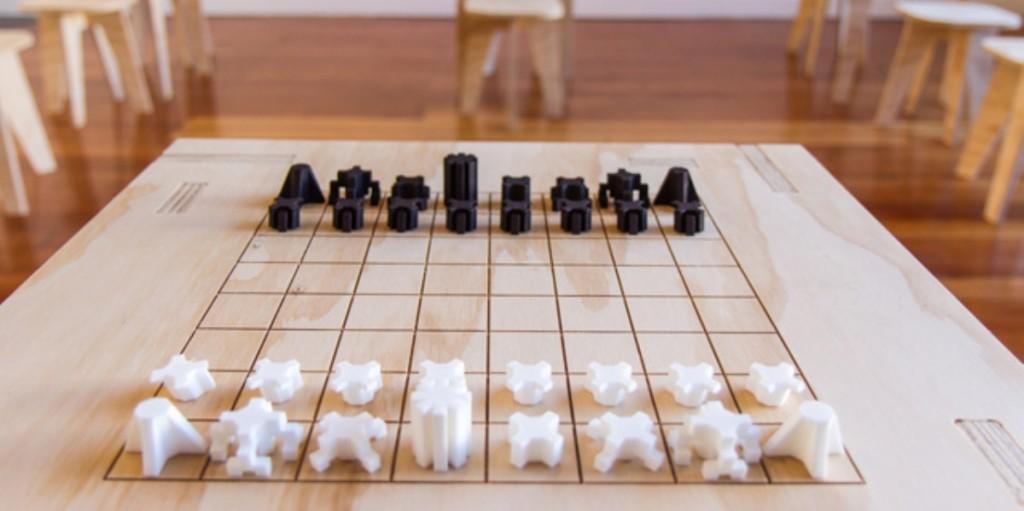
Subscribe to Our Email Newsletter
Stay up-to-date on all the latest news from the 3D printing industry and receive information and offers from third party vendors.
Print Services
Upload your 3D Models and get them printed quickly and efficiently.
You May Also Like
Johns Hopkins University Researchers Develop HyFAM Technology
Two scientists from Johns Hopkins University, Nathan C. Brown and Jochen Mueller, have developed a hybrid manufacturing technology they call HyFam, or Hybrid Formative Additive Manufacturing. Their work on this technology...
3D Printing G-Code Gets an Upgrade: T-Code
Good old G-Code still manages many 3D printers, great and small. Just like the STL, it’s a standard that enables collaboration while also holding the additive manufacturing (AM) industry back....
AM Rewind: The Biggest News and Trends of 2024
After a sluggish 2023, driven by persistent inflation and geopolitical tensions, 2024 has seen some recovery. Economic growth climbed from about 2.8 percent in 2023 to a modest 3.2 percent...
Metal Wire 3D Printer OEM ValCUN Announces Plans for 2025 Expansion
ValCUN, a Belgian original equipment manufacturer (OEM) of wire-based metal additive manufacturing (AM) hardware, has announced that the company has entered the next phase of its growth trajectory, making key...


